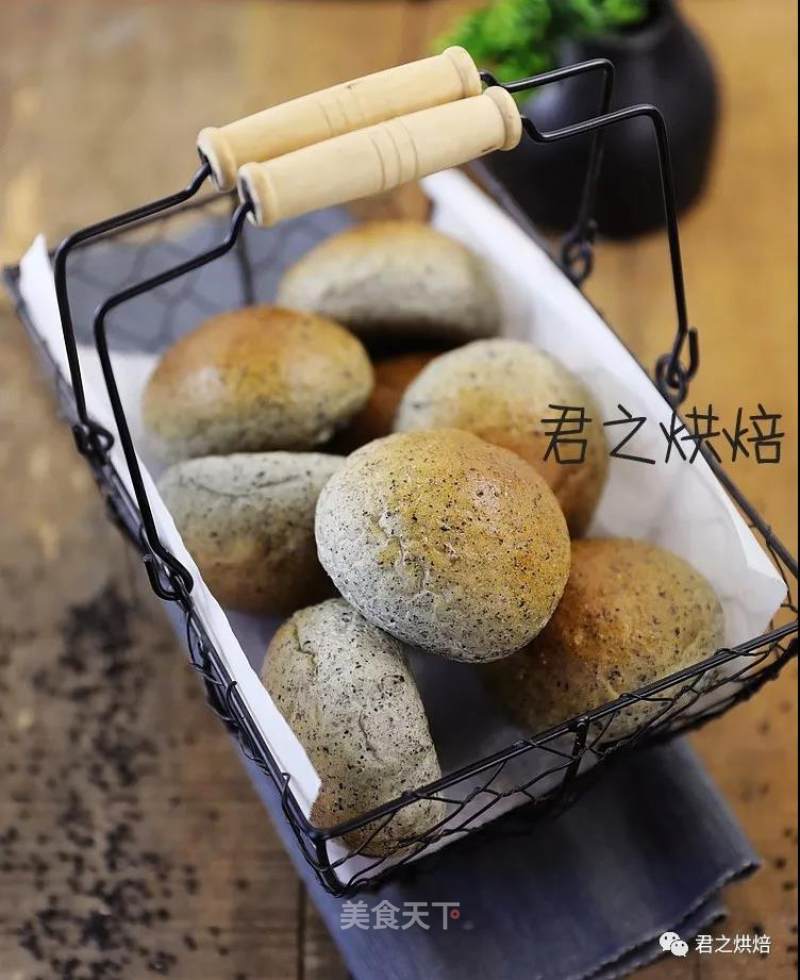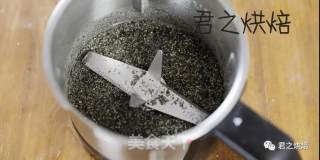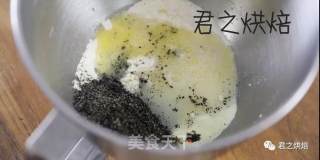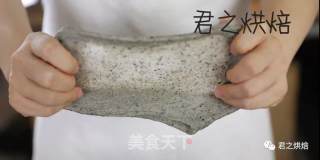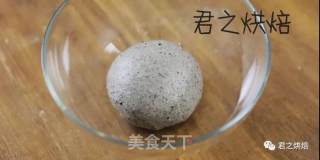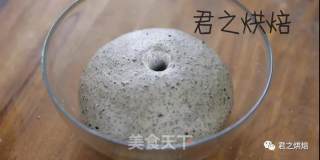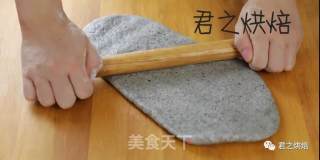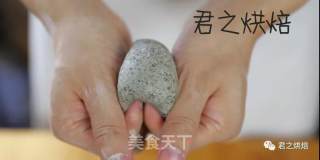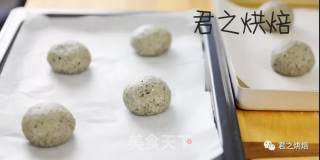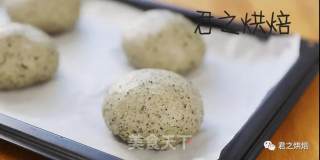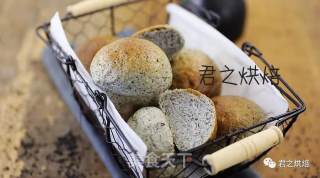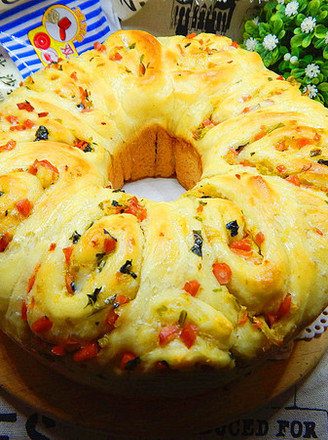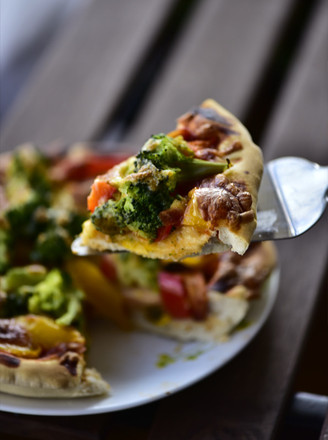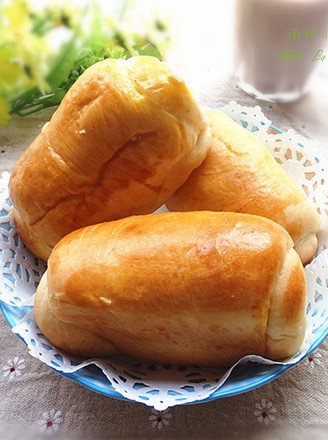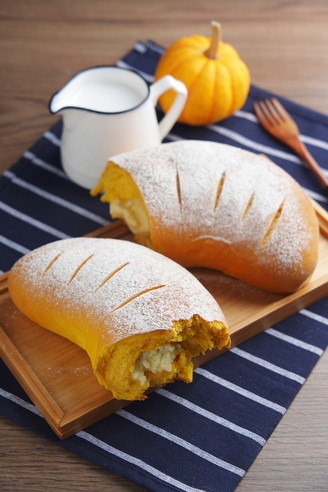Black Sesame Bun
1.
First, put the ripe black sesame seeds into the dry grinding cup of the wall breaker and beat for a few seconds to make it into the black sesame seeds as shown in the picture. ★It does not need to be whipped for too long, just whipped into crumbs. Black sesame seeds will be oily if they are too long. ★If there is no wall breaking machine, you can put the black sesame seeds in a bowl and slowly crush them with the end of a rolling pin.
2.
Put all the ingredients except butter into the mixing bowl of Jun Baker (including crushed black sesame seeds).
3.
Beat for 10 minutes at level 2 until it becomes a flexible dough, then add the softened butter, and continue beating at level 2 for 8 minutes. ★Different flours have different water absorption properties. Please adjust the amount of water according to the actual situation. The dough should be very soft, but not too sticky. If the dough sticks to the bottom of the bowl during mixing, it means that there is too much water, so add some flour appropriately.
4.
Cut a small piece of dough to check the film. The dough should be able to stretch out a light-transmitting film. If the film has not yet come out, you can continue to beat for 2-3 minutes at gear 4 until the film comes out (different water content, flour varieties, etc. will lead to different film out time, please refer to the actual Adjust the kneading time according to the situation).
5.
Knead the dough, leave it in a warm place, and wait for the dough to grow larger.
6.
When the dough becomes 2.5 times its original size, it is almost the same. Fermentation may take about 1 hour. ★Check if the dough is fermented in place, you can use your fingers to dip the flour and gently poke into the dough. If the hole does not shrink, it means that the fermentation is in place (if the hole shrinks significantly after pulling out the finger, it means that the fermentation is not enough. If the hole is Collapse, indicating excessive fermentation).
7.
The fermented dough is flattened with the palm of the hand to squeeze out the gas and make it smaller again. And flatten it with a rolling pin to fully exhaust the air in the dough. Then divide the dough into 8 even portions.
8.
Round each small dough. Use your hands to keep the two sides of the small dough closer to the bottom, and then pinch the bottom tightly to form a uniform round dough.
9.
Put the kneaded dough into a baking tray lined with parchment paper (leave enough space between the dough, I divided two baking trays).
10.
The dough undergoes final fermentation (ideal fermentation temperature 38°C, humidity 85%). About 40 minutes, when the dough has risen to twice its size, it can be baked. Brush the surface of the dough with a layer of egg liquid, put it in a preheated 180℃ oven, and bake it for about 12 minutes until the surface turns golden yellow. ★Don't ferment too much, the fermented dough can rebound by lightly pressing the surface. If the dough will collapse when pressed down, it means that the fermentation has been excessive.
11.
Finished product.
Tips:
The dough is divided into two pans for baking so that it does not stick together (unless your baking pan is large enough). The baking time for each dish is not long, so after baking one dish and then baking another dish will not have much influence on the dough. If you are worried about the over-fermentation of the second plate, you can control it by the temperature of the fermentation. The temperature of the second plate is slightly lower or taken out of the fermentation tank earlier.

